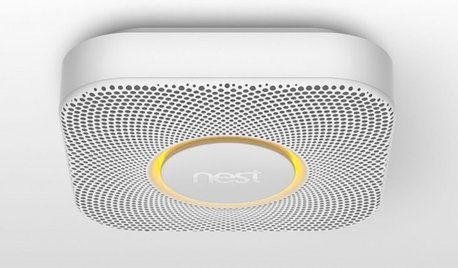Am I using my PPM meter right?
Bruce74
10 years ago
Related Stories

DECORATING GUIDESDecorating 101: How to Use White Right
If you’ve ever been in white-paint-swatch limbo, you know white can be tricky to work with. Here’s how to get the fresh look you’re after
Full Story
GREEN BUILDINGSunlight Used Right: Modern Home Designs That Harness Solar Power
Embracing passive heating principles through their architecture, siting and more, these homes save energy without skimping on warmth
Full Story
DECORATING GUIDESHow To Pick the Right Green Paint
Use Nature's Neutral to Energize, Soothe, and Surprise the Eye
Full Story
LIGHTINGHow to Choose the Right Solar Lights
Learn about different types of outdoor solar lights, where to use them and why you might want to avoid the bargain bin
Full Story
FEEL-GOOD HOME12 Very Useful Things I've Learned From Designers
These simple ideas can make life at home more efficient and enjoyable
Full Story
DECORATING GUIDESGetting the Room Right: Part I
Great Spaces Show How to Avoid the Top 10 Decorating Mistakes
Full Story
HOUZZ TOURSMy Houzz: Black and White Make a Dutch Apartment All Right
Graphic and creative touches give a 600-square-foot city rental chic style on a modest budget
Full Story
GREAT HOME PROJECTSPower to the People: Outlets Right Where You Want Them
No more crawling and craning. With outlets in furniture, drawers and cabinets, access to power has never been easier
Full Story
HOME TECHBetter, Smarter Smoke Detectors Push All the Right Buttons
No more bashing in that smoke detector with a broomstick at 3 a.m. — if you haven't already yanked it out. Welcome the new, civilized breed
Full Story
REMODELING GUIDESHow to Get Your Pendant Light Right
Find out where to place a hanging light and how high it should be
Full Story







hex2006
PupillaCharites
Related Professionals
Holly Springs Landscape Architects & Landscape Designers · Signal Hill Landscape Architects & Landscape Designers · Manchester Landscape Contractors · Amesbury Landscape Contractors · Bedford Landscape Contractors · Caldwell Landscape Contractors · Gaithersburg Landscape Contractors · Lake Saint Louis Landscape Contractors · Lynn Landscape Contractors · Panama City Beach Landscape Contractors · Ramsey Landscape Contractors · Salem Landscape Contractors · South Portland Landscape Contractors · Wallingford Landscape Contractors · White Bear Lake Landscape ContractorsBruce74Original Author
hex2006
PupillaCharites
hex2006